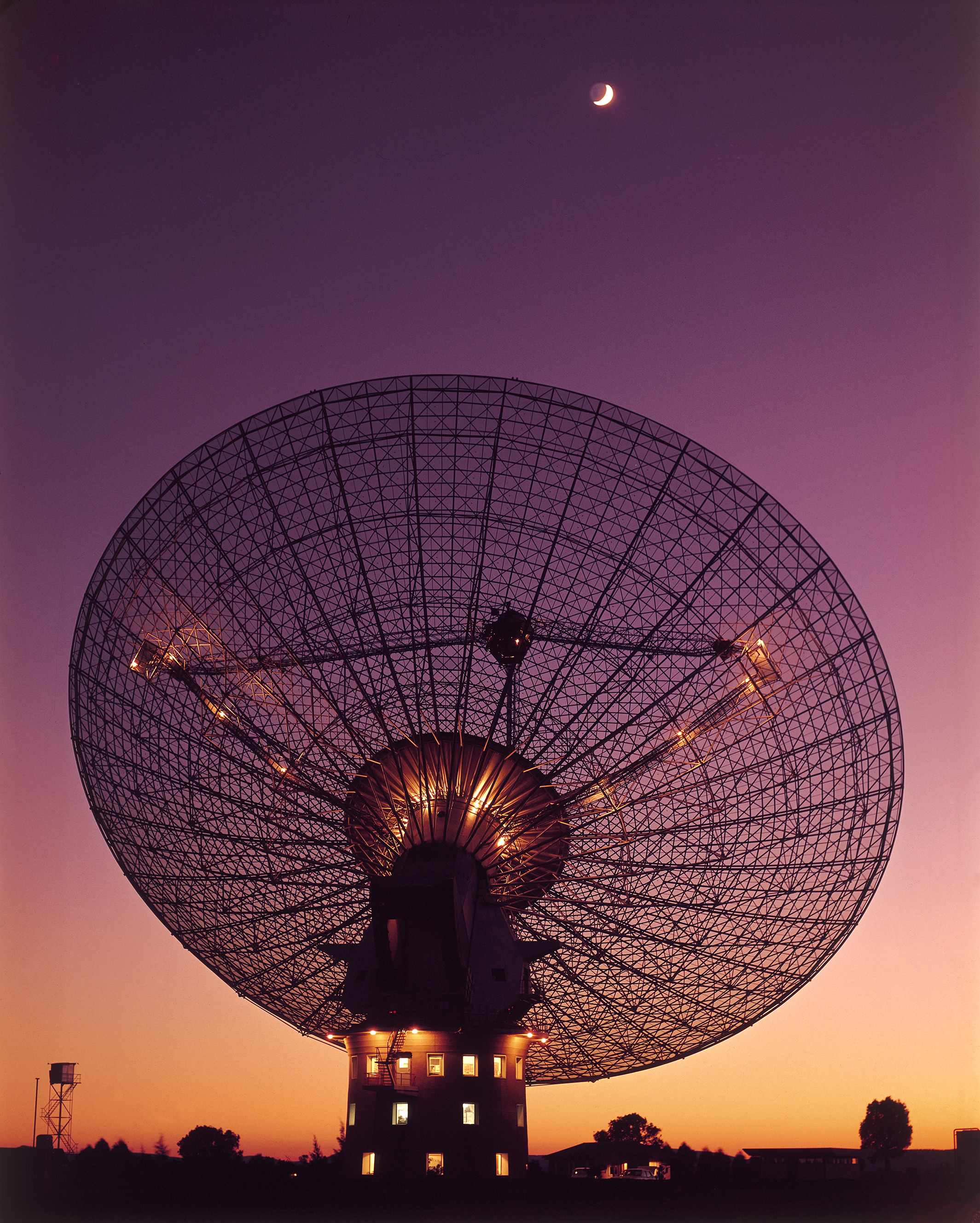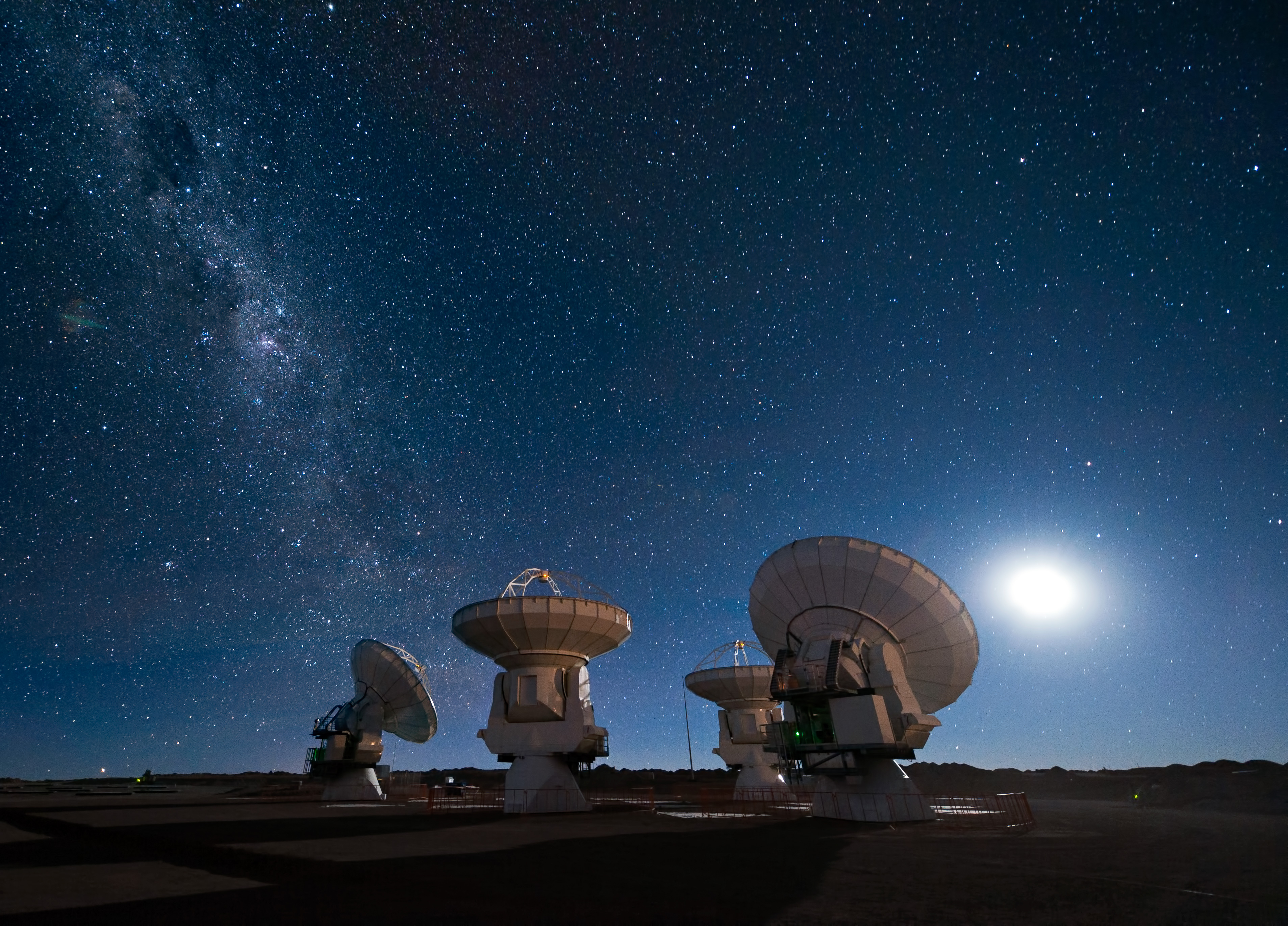|
Mopra Observatory
The 22-metre Mopra Radio Telescope, located near Coonabarabran, New South Wales, is part of the Australia Telescope National Facility, operated by CSIRO. The name hails from the location of the facility close to Mopra Rock a geological formation overlooking the telescope. It is also close to the Siding Spring optical observatory in the Warrumbungle National Park. For use as a single-dish, it has niche equipment allowing large bandwidths to be observed at millimeter-wavelengths. Being a part of the Australia Telescope, it is often used in conjunction with other AT antennas (e.g., the Australia Telescope Compact Array at Narrabri, and the 64-metre Parkes dish) to form a Very Long Baseline Interferometry (VLBI) array. Commissioned in 2006 was the Mopra Spectrometer (MOPS) "backend" which has a maximum instantaneous bandwidth of 8 GHz, it also has special zoom-modes which allow high resolution studies of up to 16 138 MHz bands over any 8 GHz. It is especially tuned ... [...More Info...] [...Related Items...] OR: [Wikipedia] [Google] [Baidu] |
Radio Telescope
A radio telescope is a specialized antenna (radio), antenna and radio receiver used to detect radio waves from astronomical radio sources in the sky. Radio telescopes are the main observing instrument used in radio astronomy, which studies the radio frequency portion of the electromagnetic spectrum, just as optical telescopes are used to make observations in the visible light, visible portion of the spectrum in traditional optical astronomy. Unlike optical telescopes, radio telescopes can be used in the daytime as well as at night. Since astronomical radio sources such as planets, stars, nebulas and galaxy, galaxies are very far away, the radio waves coming from them are extremely weak, so radio telescopes require very large antennas to collect enough radio energy to study them, and extremely sensitive receiving equipment. Radio telescopes are typically large Parabolic antenna, parabolic ("dish") antennas similar to those employed in tracking and communicating with satellites an ... [...More Info...] [...Related Items...] OR: [Wikipedia] [Google] [Baidu] |
Coonabarabran, New South Wales
Coonabarabran () is a town in Warrumbungle Shire that sits on the divide between the Central West (New South Wales), Central West and North West Slopes regions of New South Wales, Australia. At the 2021 Australian census, 2021 census, the town had a population of 2,387, Material was copied from this source, which is available under Creative Commons Attribution 4.0 International License. and as of 2021, the population of Coonabarabran and its surrounding area is 3,477. Local and district residents refer to the town as 'Coona'. Coonabarabran is the gateway to the Warrumbungle National Park, Siding Spring Observatory and the Pilliga forest, Pilliga Forest. Etymology The origin of the name ''Coonabarabran'' is unconfirmed. It may derive from a person's name or from the Gamilaraay language, Kamilaroi language word gunbaraaybaa''' meaning 'excrement', translated earlier as meaning, 'peculiar odour', this is possibly a Expurgation, bowdlerisation. Another possible meaning is derived f ... [...More Info...] [...Related Items...] OR: [Wikipedia] [Google] [Baidu] |
Australia Telescope National Facility
The Commonwealth Scientific and Industrial Research Organisation (CSIRO)'s radio astronomy observatories are collectively known as the Australia Telescope National Facility (ATNF), with the facility supporting Australia's research in radio astronomy. It is part of CSIRO's business unit known as CSIRO Space and Astronomy. CSIRO currently operates four observatories as part of the ATNF. Three are in New South Wales near the towns of Parkes, Coonabarabran and Narrabri.The fourth telescope, the next generation Australian Square Kilometre Array Pathfinder (ASKAP) is located at the Murchison Radio-astronomy Observatory in Western Australia. These telescopes can be used together as a long baseline array for use in very long baseline interferometry. Radio telescopes included in the ATNF: * The Australia Telescope Compact Array * The Parkes Observatory * The Mopra Observatory * The Australian Square Kilometre Array Pathfinder See also * Australian Space Agency * List of radio telescope ... [...More Info...] [...Related Items...] OR: [Wikipedia] [Google] [Baidu] |
CSIRO
The Commonwealth Scientific and Industrial Research Organisation (CSIRO) is an Australian Government agency that is responsible for scientific research and its commercial and industrial applications. CSIRO works with leading organisations around the world. From its headquarters in Canberra, CSIRO maintains more than 50 sites across Australia as well as in France and the United States, employing over 6,500 people. Federally funded scientific research in Australia began in 1916 with the creation of the Advisory Council of Science and Industry. However, the council struggled due to insufficient funding. In 1926, research efforts were revitalised with the establishment of the Council for Scientific and Industrial Research (CSIR), which strengthened national science leadership and increased research funding. CSIR grew rapidly, achieving significant early successes. In 1949, legislative changes led to the renaming of the organisation as Commonwealth Scientific and Industrial Research ... [...More Info...] [...Related Items...] OR: [Wikipedia] [Google] [Baidu] |
Australia Telescope Compact Array
The Australia Telescope Compact Array (ATCA) is a radio telescope operated by CSIRO at the Paul Wild Observatory, twenty five kilometres (16 mi) west of the town of Narrabri in New South Wales, Australia. Its opening ceremony took place on September 2, 1988. Overview The telescope is an array of six identical diameter dishes, which commonly operate in aperture synthesis Aperture synthesis or synthesis imaging is a type of interferometry that mixes signals from a collection of telescopes to produce images having the same angular resolution as an instrument the size of the entire collection. At each separation and ... mode to produce radio images. Five of the dishes can be moved along a three-kilometre (2 mi) railway track oriented east-west. The sixth antenna is situated three kilometres west of the end of the main track. Each dish weighs approximately . The Compact Array is a part of the Australia Telescope National Facility network of radio telescopes. The array ... [...More Info...] [...Related Items...] OR: [Wikipedia] [Google] [Baidu] |
Paul Wild Observatory
The Paul Wild Observatory, also known as the Narrabri Observatory and Culgoora Observatory, is an astronomical research facility located about 24 km west of Narrabri, New South Wales, Australia. It is the home of the Australia Telescope Compact Array, and the Culgoora Solar Observatory. The site itself and the Australia Telescope Compact Array are run by Australia's science agency, the CSIRO. The current Solar Observatory is run by the Space Weather Services section of Australia's Bureau of Meteorology. The site is named in honour of Australian radio astronomer Paul Wild, who headed the team that built the instrument that the site was established for – the Culgoora Radioheliograph, the world's first radioheliograph – which ran from 1967 to 1984. The Australia Telescope Compact Array began operating at the site in 1988. Current facilities * The Australia Telescope Compact Array – a six-dish radio telescope interferometer * The Ionospheric Prediction Service (Space W ... [...More Info...] [...Related Items...] OR: [Wikipedia] [Google] [Baidu] |
Parkes Observatory
Parkes Observatory is a radio astronomy observatory, located north of the town of Parkes, New South Wales, Australia. It hosts Murriyang, the 64 m CSIRO Parkes Radio Telescope also known as "The Dish", along with two smaller radio telescopes. The 64 m dish was one of several radio antennae used to receive live television images of the Apollo 11 Moon landing. Its scientific contributions over the decades led the ABC to describe it as "the most successful scientific instrument ever built in Australia" after 40 years of operation. The Parkes Observatory is run by the Commonwealth Scientific and Industrial Research Organisation (CSIRO), as part of the Australia Telescope National Facility (ATNF) network of radio telescopes. It is frequently operated together with other CSIRO radio telescopes, principally the array of six dishes at the Australia Telescope Compact Array near Narrabri, and a single dish at Mopra (near Coonabarabran), to form a very long baseline interferometry ar ... [...More Info...] [...Related Items...] OR: [Wikipedia] [Google] [Baidu] |
Very Long Baseline Interferometry
Very-long-baseline interferometry (VLBI) is a type of astronomical interferometry used in radio astronomy. In VLBI a signal from an astronomical radio source, such as a quasar, is collected at multiple radio telescopes on Earth or in space. The distance between the radio telescopes is then calculated using the time difference between the arrivals of the radio signal at different telescopes. This allows observations of an object that are made simultaneously by many radio telescopes to be combined, emulating a telescope with a size equal to the maximum separation between the telescopes. Data received at each antenna in the array include arrival times from a local atomic clock, such as a hydrogen maser. At a later time, the data are correlated with data from other antennas that recorded the same radio signal, to produce the resulting image. The resolution achievable using interferometry is proportional to the observing frequency. The VLBI technique enables the distance between t ... [...More Info...] [...Related Items...] OR: [Wikipedia] [Google] [Baidu] |
Crowdfunding
Crowdfunding is the practice of funding a project or venture by raising money from a large number of people, typically via the internet. Crowdfunding is a form of crowdsourcing and Alternative Finance, alternative finance, to fund projects "without standard financial intermediaries". Mollick, E. (2014). ''The dynamics of crowdfunding: An exploratory study.'' Journal of Business Venturing. Vol. 29, pp. 1–16. In 2015, over was raised worldwide by crowdfunding. Although similar concepts can also be executed through mail-order subscriptions, benefit events, and other methods, the term crowdfunding refers to internet-mediated registries. This modern crowdfunding model is generally based on three types of actors – the project initiator who proposes the idea or project to be funded, individuals or groups who support the idea, and a moderating organization (the "platform") that brings the parties together to launch the idea. The term crowdfunding was coined in 2006 by entrepreneur an ... [...More Info...] [...Related Items...] OR: [Wikipedia] [Google] [Baidu] |
List Of Radio Telescopes
This is a list of radio telescopes – over one hundred – that are or have been used for radio astronomy. The list includes both single dishes and interferometric arrays. The list is sorted by region, then by name; unnamed telescopes are in reverse size order at the end of the list. The first radio telescope was invented in 1932, when Karl Jansky at Bell Telephone Laboratories observed radiation coming from the Milky Way. Africa Antarctica Asia Australia Europe North America South America Arctic Ocean Atlantic Ocean Indian Ocean Pacific Ocean Space-based Under construction or planned construction Proposed telescopes Gallery of big dishes File:FAST Radio Telescope (captured from video).jpg, alt=Five-hundred-meter Aperture Spherical Telescope seen from above in 2020, The 500 meter Five-hundred-meter Aperture Spherical Telescope (FAST), China (2016) File:GBT.png, alt=Green Bank Telescope, The 100 meter Green Bank Teles ... [...More Info...] [...Related Items...] OR: [Wikipedia] [Google] [Baidu] |
Radio Telescopes
A radio telescope is a specialized antenna (radio), antenna and radio receiver used to detect radio waves from astronomical radio sources in the sky. Radio telescopes are the main observing instrument used in radio astronomy, which studies the radio frequency portion of the electromagnetic spectrum, just as optical telescopes are used to make observations in the visible light, visible portion of the spectrum in traditional optical astronomy. Unlike optical telescopes, radio telescopes can be used in the daytime as well as at night. Since astronomical radio sources such as planets, stars, nebulas and galaxy, galaxies are very far away, the radio waves coming from them are extremely weak, so radio telescopes require very large antennas to collect enough radio energy to study them, and extremely sensitive receiving equipment. Radio telescopes are typically large Parabolic antenna, parabolic ("dish") antennas similar to those employed in tracking and communicating with satellites an ... [...More Info...] [...Related Items...] OR: [Wikipedia] [Google] [Baidu] |






